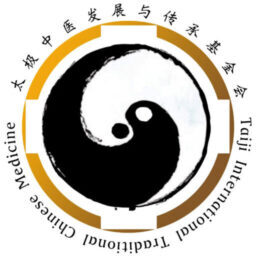拔罐操作注意事项:
- 酒精棉球处理:点火后,应当用手拧干或甩掉棉球上的多余酒精,确保棉球不再滴酒精,以避免在操作过程中引发烫伤的风险。
- 安全操作距离:使用点燃的酒精棉球时,应避免在患者皮肤正上方操作,保持火焰与皮肤至少5-10厘米的距离,防止火焰意外接触皮肤造成烧伤。
- 留罐时间:如果需要重复拔罐2-3次,每次留罐时间不宜超过10分钟。
水泡的处理方法:
- 刺破水泡(有些伤口不宜刺破):用消毒针头轻轻刺破水泡,排出液体,但不要完全去除表皮,以保护下方的新生皮肤。
- 药物处理:处理完水泡后,可以适当涂抹抗菌药膏或使用促进皮肤愈合的敷料,帮助恢复。
- 民间疗法:对于轻度烫伤,可以使用民间疗法,如将新鲜的芦荟叶掰开,涂抹在伤口上,并固定在局部。确保芦荟汁液接触到伤口,每两小时或每天更换2-5次。
- 保护伤口:用无菌纱布或创可贴覆盖水泡部位,以防止摩擦和污染。
防止晕针的方法:
- 充分沟通:治疗前应与患者充分沟通,了解其是否有晕针史或恐针症,并帮助缓解紧张情绪。
- 适量进食:建议患者在治疗前适量进食,避免空腹或过饱,以降低晕针风险。
- 温暖的环境:确保治疗环境温暖、舒适,避免患者因寒冷或不适而导致晕针。
- 正确体位:对于初次治疗或体质较弱的患者,建议采用平卧位或半卧位,避免突然站立或坐起,以防体位性低血压引发晕针。
- 熟练操作:针刺时应动作轻柔、稳定,避免强烈刺激,尤其是在敏感穴位。
晕针的处理方法:
- 立即停止治疗:发现患者有晕针症状(如头晕、出汗、面色苍白、恶心等)时,应立即停止针刺操作,并迅速拔除针具。
- 平卧休息:让患者平卧,抬高双腿,使头部略低,以增加脑部供血。
- 保持温暖:若患者出现寒战或身体发冷,应立即为其保暖,防止进一步受凉。
- 补充糖分:若因低血糖引发晕针,可让患者饮用温糖水或其他含糖饮料,帮助恢复。
- 安抚情绪:通过语言安抚患者,减轻其恐惧和焦虑,同时观察症状是否缓解。
- 急救穴位处理:如症状较重,可针刺或按压人中,内关,足三里等急救穴位,以促使患者恢复意识。
- 就医处理:如果晕针症状严重且持续不缓解,应及时送患者前往医院进行进一步的专业处理。
Cupping Operation Precautions:
- Handling Alcohol-Soaked Cotton Ball: After lighting, the cotton ball should be squeezed or shaken to remove excess alcohol, ensuring that it no longer drips alcohol. This helps prevent the risk of burns during the procedure.
- Safe Operating Distance: When using the lit alcohol-soaked cotton ball, avoid operating directly over the patient’s skin. Keep the flame at least 5-10 cm away from the skin to prevent accidental burns.
- Cupping Duration: If cupping needs to be repeated 2-3 times, each session should not exceed 10 minutes.
Blister Treatment Methods:
- Piercing Blisters (Note: Some wounds should not be pierced): Use a sterilized needle to gently pierce the blister and drain the fluid, but do not remove the skin covering the blister to protect the underlying new skin.
- Medication Application: After treating the blister, apply an antibacterial ointment or use a dressing that promotes skin healing to aid recovery.
- Folk Remedies: For mild burns, you can use folk remedies, such as applying fresh aloe vera gel directly to the wound and securing it in place. Ensure the aloe vera juice comes into contact with the wound, and replace it every 2-5 hours or several times daily.
- Protecting the Wound: Cover the blister area with sterile gauze or a band-aid to prevent friction and contamination.
Methods to Prevent Needle Fainting:
- Thorough Communication: Before treatment, communicate fully with the patient to understand if they have a history of needle fainting or needle phobia and help alleviate their anxiety.
- Appropriate Food Intake: It is advisable for patients to have a moderate meal before treatment, avoiding acupuncture on an empty or overly full stomach to reduce the risk of fainting.
- Warm Environment: Ensure the treatment environment is warm and comfortable to prevent the patient from fainting due to cold or discomfort.
- Proper Positioning: For first-time patients or those with weaker constitutions, it is recommended to adopt a supine or semi-reclined position to avoid sudden standing or sitting up, which could cause orthostatic hypotension and lead to fainting.
- Skilled Operation: During needle insertion, the practitioner’s movements should be gentle and steady, avoiding strong stimulation, especially at sensitive acupoints.
Treatment of Needle Fainting:
- Immediate Stop of Treatment: If the patient shows symptoms of needle fainting (such as dizziness, sweating, pale complexion, nausea, etc.), immediately stop the acupuncture procedure and remove the needles quickly.
- Supine Rest: Have the patient lie down with their legs elevated to increase blood flow to the brain.
- Keep Warm: If the patient experiences chills or feels cold, provide warmth immediately to prevent further cooling.
- Sugar Intake: If fainting is due to low blood sugar, give the patient warm sugary water or other sweetened drinks to help them recover.
- Calm Reassurance: Reassure the patient verbally to reduce their fear and anxiety while monitoring if their symptoms improve.
- Emergency Acupoint Treatment: If symptoms are severe, acupuncture or pressing emergency acupoints such as Renzhong (DU26), Neiguan (PC6), and Zusanli (ST36) can help restore consciousness.
- Medical Attention: If the symptoms of fainting are severe and persist, the patient should be promptly taken to a hospital for further professional treatment.
부항 시술 주의사항:
- 알코올 솜 처리: 점화 후, 솜에 남아있는 과도한 알코올을 손으로 짜거나 흔들어 제거하여 알코올이 더 이상 떨어지지 않도록 합니다. 이는 시술 중 화상을 입을 위험을 줄이는 데 도움이 됩니다.
- 안전 작업 거리: 불을 붙인 알코올 솜을 사용할 때는 환자의 피부 바로 위에서 작업하지 않도록 주의해야 하며, 불꽃이 피부에서 최소 5-10cm 이상 떨어지도록 유지하여 화염이 피부에 닿아 화상을 입히는 것을 방지합니다.
- 부항 시간: 매번 부항 시간은 10분을 넘지 않도록 합니다.
물집 치료 방법:
- 물집 터뜨리기 (참고: 일부 상처는 터뜨리지 않아야 함): 소독된 침을 사용하여 물집을 살짝 터뜨리고 액체를 배출하지만, 물집을 덮고 있는 피부를 완전히 제거하지 말아야 하며, 이는 새로 생긴 피부를 보호하기 위함입니다.
- 약물 처리: 물집을 치료한 후에는 항균 연고를 바르거나 피부 회복을 촉진하는 드레싱을 사용하여 회복을 도와줍니다.
- 민간 요법(경미한 화상에도 적응됨): 신선한 알로에 잎을 잘라 상처에 직접 바르고 고정하는 방법입니다. 알로에 즙이 상처에 접촉되도록 하고,매 2시간마다 또는 하루에 2-5번 교체합니다.
- 상처 보호: 물집 부위를 멸균 거즈 또는 반창고로 덮어 마찰과 오염을 방지합니다.
침 치료 시 기절 방지 방법:
- 충분한 의사소통: 치료 전에 환자와 충분한 의사소통을 통해 이전에 침 치료 시 기절한 적이 있는지 또는 침에 대한 공포증이 있는지 확인하고, 불안을 완화할 수 있도록 도와줍니다.
- 적절한 식사: 환자에게 치료 전에 적당히 식사하도록 권장하며, 공복 상태나 과식 후에 침을 맞는 것을 피하게 하여 기절의 위험을 줄입니다.
- 따뜻한 환경: 치료 환경이 따뜻하고 편안한지 확인하여, 환자가 추위나 불편함으로 인해 기절하지 않도록 합니다.
- 올바른 자세: 처음 치료를 받는 환자나 체질이 약한 환자는 갑자기 서거나 일어나지 않도록 평상시 눕거나 반쯤 기대는 자세를 취하도록 권장합니다. 이는 기립성 저혈압을 방지하여 기절을 예방할 수 있습니다.
- 숙련된 시술: 침을 놓을 때, 시술자의 동작은 부드럽고 안정적이어야 하며, 특히 민감한 혈자리에서는 강한 자극을 피해야 합니다.
기절 시 대처 방법:
- 즉시 치료 중단: 환자가 침 치료 중 기절 증상(예: 현기증, 발한, 창백한 안색, 메스꺼움 등)을 보이면 즉시 침 시술을 중단하고 바늘을 빠르게 제거합니다.
- 누워서 휴식: 환자가 누워서 다리를 올려 두어 뇌로 가는 혈류를 증가시킵니다.
- 따뜻하게 유지: 환자가 오한을 느끼거나 추위를 느끼면 즉시 따뜻하게 하여 추가적인 냉기를 방지합니다.
- 당분 보충: 저혈당으로 인해 기절한 경우, 환자에게 따뜻한 설탕물이나 기타 당분이 포함된 음료를 마시게 하여 회복을 돕습니다.
- 심리적 안정을 도모: 말로 환자를 안심시켜 두려움과 불안을 줄이고, 증상이 완화되는지 관찰합니다.
- 응급 혈자리 처리: 증상이 심할 경우, 인중, 내관, 족삼리 등 응급 혈자리를 침 놓거나 눌러서 환자의 의식을 회복시키는 데 도움을 줍니다.
- 의료 처치: 기절 증상이 심하고 지속될 경우, 환자를 신속히 병원으로 데려가 추가 전문 치료를 받도록 해야 합니다.
